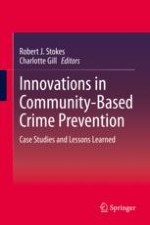2020 | OriginalPaper | Chapter
5. Building a “Beautiful Safe Place for Youth”: The Story of an Effective Community-Research-Practice Partnership in Rainier Beach, Seattle
Authors : Charlotte Gill, Claudia Gross Shader
Published in: Innovations in Community-Based Crime Prevention
Publisher: Springer International Publishing
Activate our intelligent search to find suitable subject content or patents.
Select sections of text to find matching patents with Artificial Intelligence. powered by
Select sections of text to find additional relevant content using AI-assisted search. powered by
